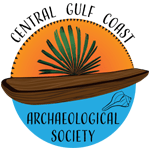DECEMBER 2020
S. Margaret Spivey-Faulkner, Ph.D., Assistant Professor, Department of Anthropology, University of Alberta
An Indigenous Analysis of the Grotesques of the Southeast
A new reanalysis of the large assemblage of zoomorphic carvings excavated at the Fort Center archaeological site in south Florida has revealed what appears to be a nearly 1,000-year rooftop sculptural tradition in the American southeast. Here, we will review that reanalysis, including a nascent indigenous method of interpreting the figural depictions using folk taxonomies developed out of Native southeastern languages. Finally, we will contextualize this work within the broader project of indigenous archaeology.
Dr. S. Margaret Spivey-Faulkner is an anthropological archaeologist and Assistant Professor in the Department of Anthropology at the University of Alberta. Her work focuses on hunter-gatherers of the southeastern United States, looking specifically at examples of peoples who defy popular characterization of hunter-gatherer societal complexity.
NOVEMBER 2020
Christopher A. Kiahtipes, Ph.D., Postdoctoral Scholar, Institute for the Advanced Study of Culture and the Environment, University of South Florida
Forgotten Ecologies: Recent Vegetation Transformations Reveal Past Human Influence
Humans leave lasting environmental legacies on the landscapes they occupy. From the fire-stick to the farm, human interventions in ecological process have important ramifications for future vegetation cover. Yet disentangling human-driven (anthropogenic) vegetation change from natural fluctuations in climate has proven difficult in the sedimentary record. I explore the conceptual and empirical challenges of identifying and assessing human-driven environmental change in archaeological and paleoecological contexts. I do so using my own research in the Mai Ndombe, Equateur, and Tchuapa provinces of the Democratic Republic of Congo. Coring of deposits associated with archaeological sites and offsite peat-land complexes dispersed across the interior forest zone reveals regional patterns in climatic-forcing as well as the timing and extent of human interventions in the rain forest zone. At the conclusion, I make some comparisons with the archaeological/paleoecological records of the southeast US and consider whether there are common patterns in environmental transformations leading up the Colonial era.
Chris Kiahtipes is a Postdoctoral Fellow in the Department of Anthropology with the Institute for the Advanced Study of Culture and Environment. His research examines the combined influence of human societies and climate change on vegetation cover in Africa’s Congo Basin as well as the Great Basin region of North America. With a specialization in the recovery and analysis of plant microfossils, his research projects bring together archaeological and paleoecological methods to document the long-term influence of human societies on global ecosystems. Chris’ other research interests include fire ecology, quantitative methods, human behavioral ecology, and conservation biology.
OCTOBER 2020
Trevor Duke, Ph.D. Candidate, University of Florida & Lindsey Parsons, M.A. Student, Geology Department, University of Georgia
Gulf Coast Archaeology: Examining Society and Climate through Material Culture
Two winners of the 2019 and 2020 Alliance for Weedon Island Archaeological Research and Education (AWIARE) and Levett Foundation Grant will discuss their winning research along the Gulf Coast of Florida.
C. Trevor Duke is a Ph.D. candidate in Anthropology at the University of Florida. His research focuses on how people use labor and objects to create social relationships. His dissertation research centers around developing new methods for investigating pottery specialization in small-scale societies.
Lindsey Parsons is a second-year master’s student in the Geology Department at the University of Georgia. Her focus is interdisciplinary in nature combining the practices the paleontology and archaeology to understand the resource use of scallops by native communities along the gulf coast of Florida. Her project is being funded by the Alliance for Weedon Island Archaeology Research and Education, Inc. (AWIARE)/ Levitt Foundation. She currently works as a research assistant at the Laboratory of Archaeology working on an NSF-funded project. She completed her undergraduate geology degree at the University of Georgia as well in 2013.
SEPTEMBER 2020
Robert Austin, Ph.D., Alliance for Weedon Island Archaeological Research and Education, Inc.
Once There Was A Mound . . .
During the third week of July 1950, bulldozers began chewing away at the sides of a large shell mound in downtown St. Petersburg, bringing to an end a once iconic landmark. During the city's early development, images of Shell Mound Park were used to promote tourism and boost real estate sales. But the fact that little was known archaeologically about the mound enabled naive, and sometimes outlandish, interpretations of its origin and function to be perpetuated by the public and press. These ultimately influenced public and political perceptions of the mound's value and Shell Mound Park became a source of conflict between the forces of progress and preservation. Eventually, the mound succumbed to the advancing front of urbanization. This is that story.
Robert Austin has a Ph.D. in anthropology from the University of Florida and worked in the cultural resource management field for nearly 40 years before retiring in 2015. He is a co-founder of the Alliance for Weedon Island Archaeological Research and Education, Inc. (AWIARE) where he currently serves as Treasurer and Principal Archaeologist.
JANUARY 2020
Dr. Thomas Pluckhahn is a Professor in the Department of Anthropology at the University of South Florida
Remembering Tocobaga: Recent Archaeology at the Safety Harbor Site in Philippe Park
The Safety Harbor archaeology site (8PI2) in Philippe Park is widely assumed to represent the ruins of the Native town of Tocobaga, where the Spanish briefly established a mission and fort in the 1560s. However, the site has only been minimally investigated, and much of the work is under-reported. This talk describes the goals and preliminary results of recent archaeological investigations by the University of South Florida.
Dr. Thomas Pluckhahn is a Professor in the Department of Anthropology at the University of South Florida. His research focuses on the understanding of small-scale social formations, particularly on the Native American societies of the Woodland period (ca. 1000 BC to AD 1050) in the American Southeast and those of the Swift Creek and Weeden Island cultures of the Gulf Coast.


